Table of Contents
- Zombie Spiders
- Parasitic Wasps
- Parasitic Wasps vs Spiders Zombification
- Fungus vs Spiders Zombification
- How the Fungus Enters the Spider’s Body
- Conclusion
- Frequently Asked Question
Zombie Spiders
You’ve probably heard of zombies in movies and games, but have you heard of zombie spiders? If you’re thinking it’s a different spider species, you’re mistaken. Zombie spiders are spiders that have been attacked by parasitic wasps and fungus, causing them to look and behave like zombies.
Let’s delve into the intricate and life-threatening mystery of zombie spiders in detail.
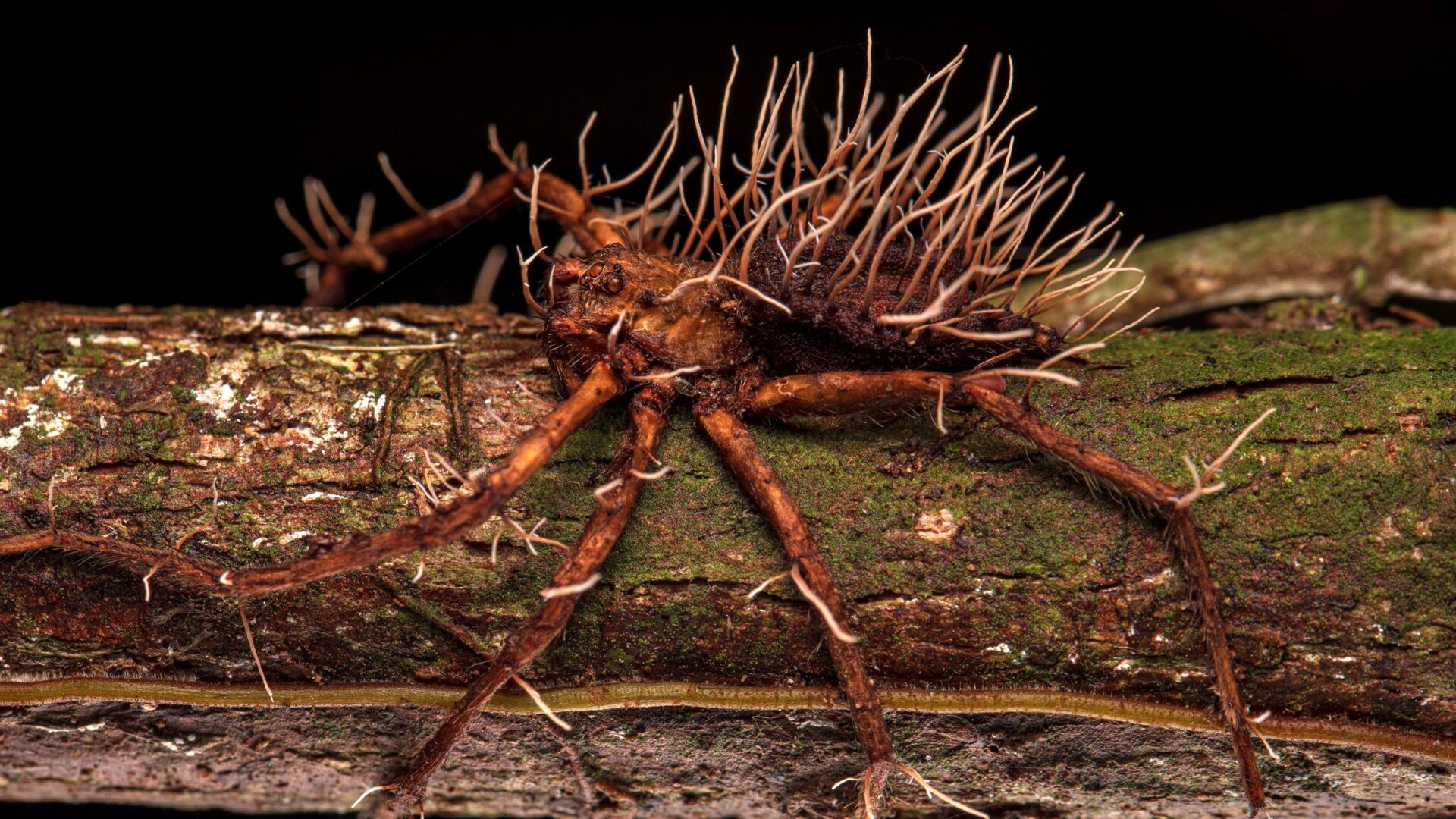
Parasitic Wasps
First, let’s learn a bit about parasitic wasps. Parasitic or parasitoid wasps are small flying insects that lay their eggs inside other insects as part of their life cycle. These eggs hatch inside the host insect, and the larvae feed on it. After completing their feeding, the larvae transform into pupae. Sometimes, these pupae are visible outside of the host insect. Eventually, adult wasps emerge from the pupae and fly away, while the parasitized insect ultimately dies.
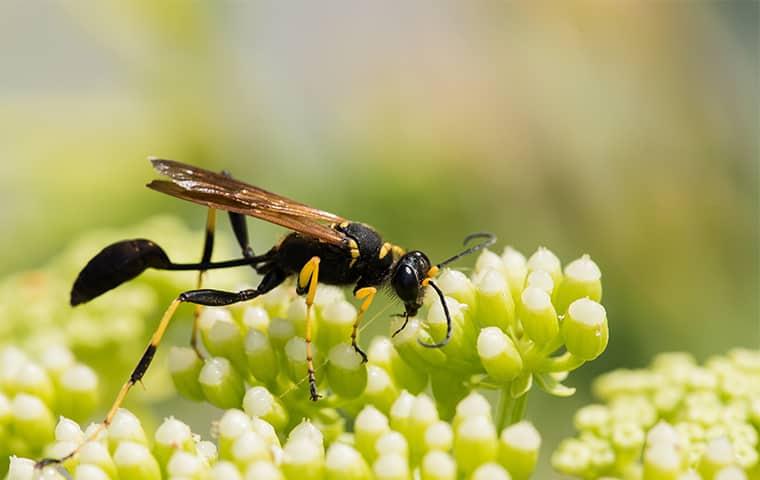
Parasitic Wasps vs Spiders Zombification
Parasitic wasps pose a significant threat to spiders, acting as dangerous predators. Research indicates that they have the ability to manipulate the behavior of spiders, which is quite remarkable. Let’s delve into this life-threatening mystery of zombie spiders and how parasitic wasps can actually zombify spiders to fulfill their own life cycle.
So, it all begins with the parasitic wasps temporarily paralyzing the spiders using their venomous sting. This marks the start of this life-threatening and mysterious journey. The venom of wasps contains a complex mixture of chemicals that target the spider’s nervous system. It’s fascinating to note that these parasitic wasps inject precisely the right amount of venom to temporarily paralyze the spider without killing it. Once paralyzed, the spider loses its ability to move, which allows the spider wasps to inject their eggs into the spider’s abdomen. Spider wasps, also known as pompilid wasps, are common predators of spiders. In North America, the mud dauber wasp is a common predator of spiders.
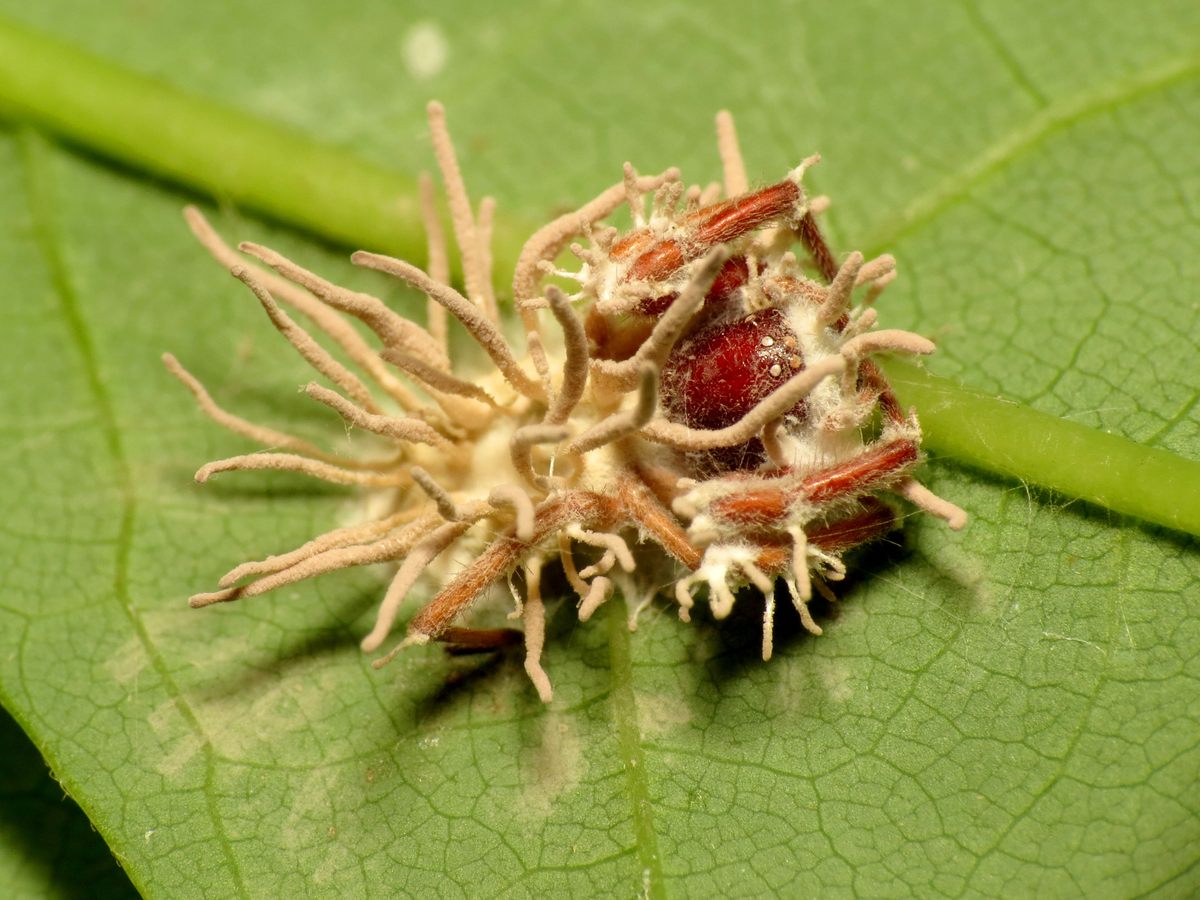
The eggs of the wasps take 3-5 days to hatch. After hatching, the larva begins to feed on the spider. You’ll be astonished to learn how the larva feeds on them. They start by making tiny holes in the spider’s abdomen to suck its hemolymph or blood, thus obtaining the nutrients needed for their growth.
As the parasitic wasp larva begins to grow, they start controlling the spider’s behavior by utilizing complex chemicals within the spider’s body. Once they reach the final stage of development, they essentially hypnotize the spider into spinning webs and constructing a protective cocoon for the pupa. This aids in the development and protection of the pupa from enemies and adverse environments. Finally, the adult wasp emerges from the pupa and seeks a mate to begin the cycle again.
Fungus vs Spiders Zombification
So far, we’ve discussed how parasitic wasp larvae turn spiders into zombies. However, these little creatures can also be affected by other organisms like fungus, causing them to lose control and become zombie spiders.
It’s not uncommon to find insects parasitized by zombie fungi in the wild. Apart from spiders, ants also experience zombification by certain fungi. One such genus is Ophiocordyceps, a parasitic fungi that can turn ants into zombies. Once infected, this fungus gradually takes control of the ant’s body and ultimately kills it.
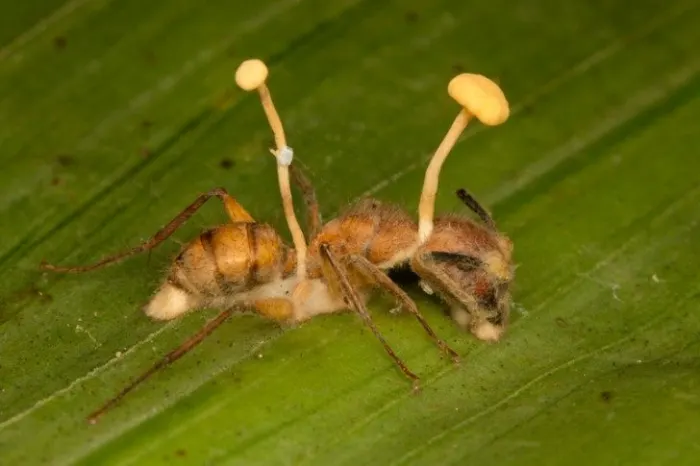
Similar to ants, when fungi attack spiders,it slowly kills the spider. Entomopathogenic fungi are parasitic microorganisms that not only kill spiders but also many other insects and arthropods. When this fungus infects a spider’s body, it becomes covered with white fur-like structures, resembling a spider covered in snow.
I know you’re wondering how the fungus gets to the spider. Let’s explore further.
How the Fungus Enters the Spider’s Body
As you already know, there are different types of fungi. The fungus that attacks spiders and other organisms is pathogenic, meaning it causes diseases and releases spores to disperse in various areas. As mentioned earlier in this article, entomopathogenic fungi are the type of fungi that slowly zombify spiders. These fungi typically enter or penetrate the insect’s cuticle using enzymes like chitinases, lipases, and proteases.
Unlike the larvae of wasps, the fungus does not change the behavior of spiders. Instead, when the fungus penetrates the spider’s body, it slowly turns them into zombies. Spiders are often found clinging to walls, on the underside of leaves, or hanging from their webs, and this is due to the contraction of their muscles.

Once the fungus enters the spider’s body, it begins to consume its living tissue slowly, eventually killing it. As you now understand, the fungus penetrates the insect’s cuticle using enzymes like chitinases, lipases, and proteases. After penetrating, branches of hyphae grow into the host. The fungus then drains all the nutrients from the host’s body and fills its body with spores to reproduce. When the fungus enters the spider’s body, it can rapidly infect other spiders nearby.
Conclusion
The article explores the phenomenon of zombie spiders, which are spiders manipulated by parasitic wasps and fungi. Parasitic wasps lay eggs inside spiders, temporarily paralyzing them with venom. Once hatched, the larvae feed on the spider, eventually controlling its behavior to create a protective cocoon for the pupa. Similarly, certain fungi infect spiders, slowly consuming them and using their bodies to spread spores. The fungi penetrate the spider’s cuticle and consume its tissue, ultimately leading to its death.
Frequently Asked Question
Q1: What are zombie spiders?
A1: Zombie spiders are spiders that have been attacked by parasitic wasps or fungi, causing them to exhibit abnormal behavior and appearance, resembling zombies.
Q2: How do parasitic wasps affect spiders?
A2: Parasitic wasps inject their eggs into spiders, temporarily paralyzing them with venom. The hatched larvae then feed on the spider’s body and eventually control its behavior to create a protective cocoon for the pupa.
Q3: What is the role of fungi in zombifying spiders?
A3: Certain fungi infect spiders, slowly consuming their living tissue and using their bodies to spread spores. These fungi penetrate the spider’s cuticle and ultimately lead to its death.
Q4: How do parasitic wasps manipulate spider behavior?
A4: Parasitic wasp larvae release complex chemicals into the spider’s body, which gradually control its behavior. They induce the spider to spin webs and construct a protective cocoon for the pupa.
Q5: How do fungi enter the bodies of spiders?
A5: Fungi enter the bodies of spiders by penetrating their cuticle using enzymes like chitinases, lipases, and proteases. Once inside, the fungi consume the spider’s tissue and fill its body with spores to reproduce.
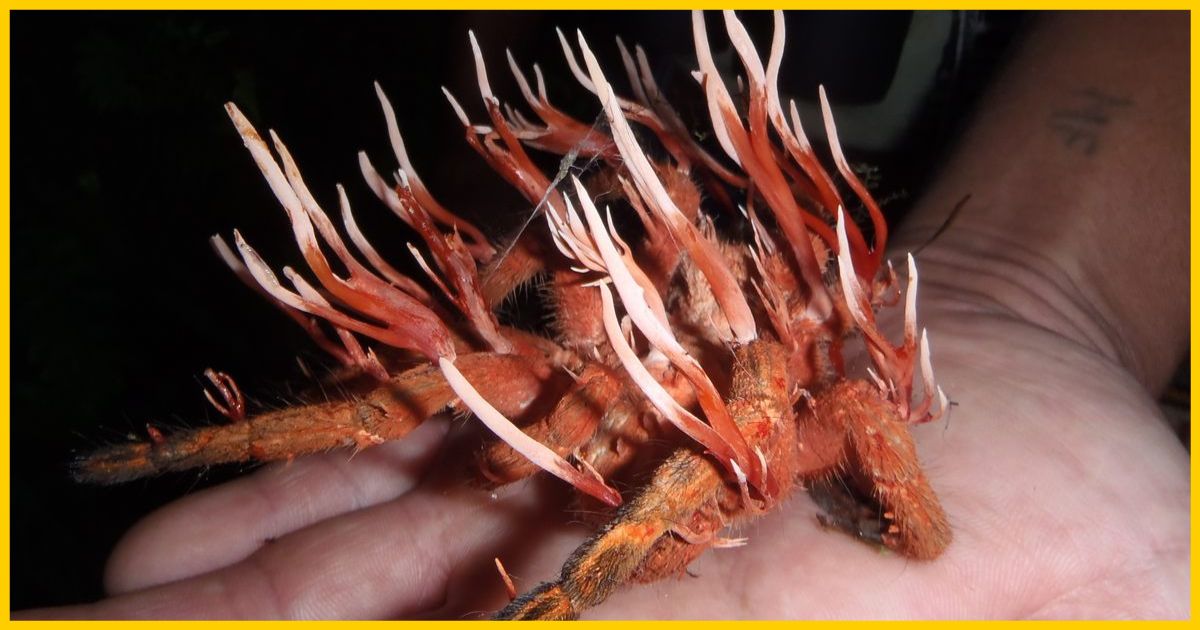
The enthusiasm I have for your work matches your own. Your visual presentation is refined, and the content you’ve authored is of a high caliber. Nevertheless, you appear to be uneasy about the possibility of delivering something that may cause unease. I agree that you’ll be able to address this concern promptly.